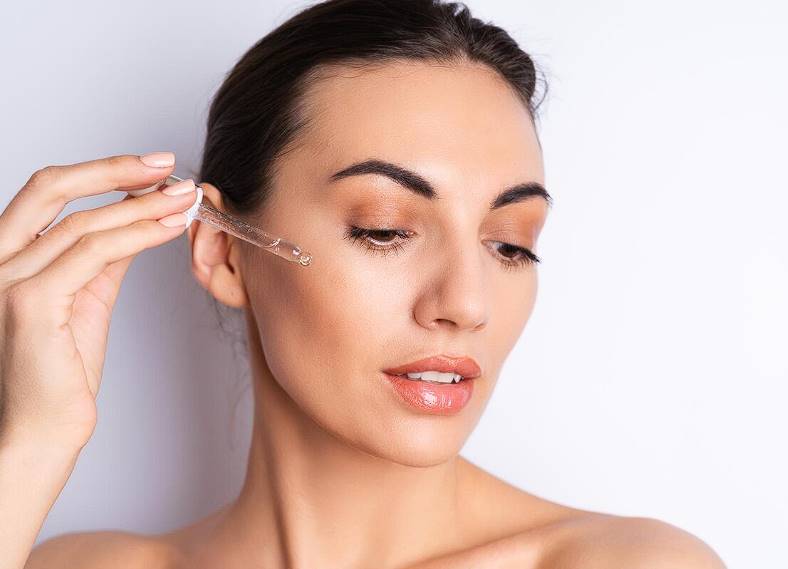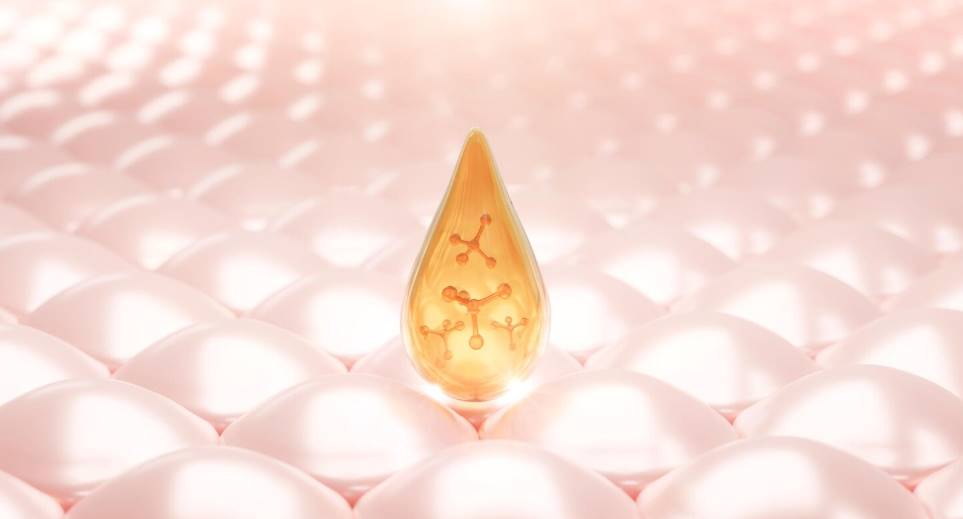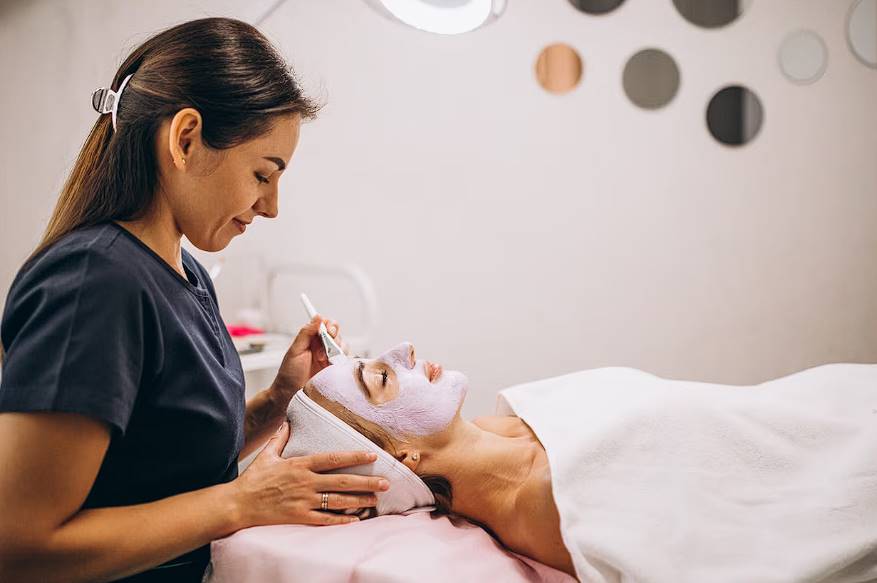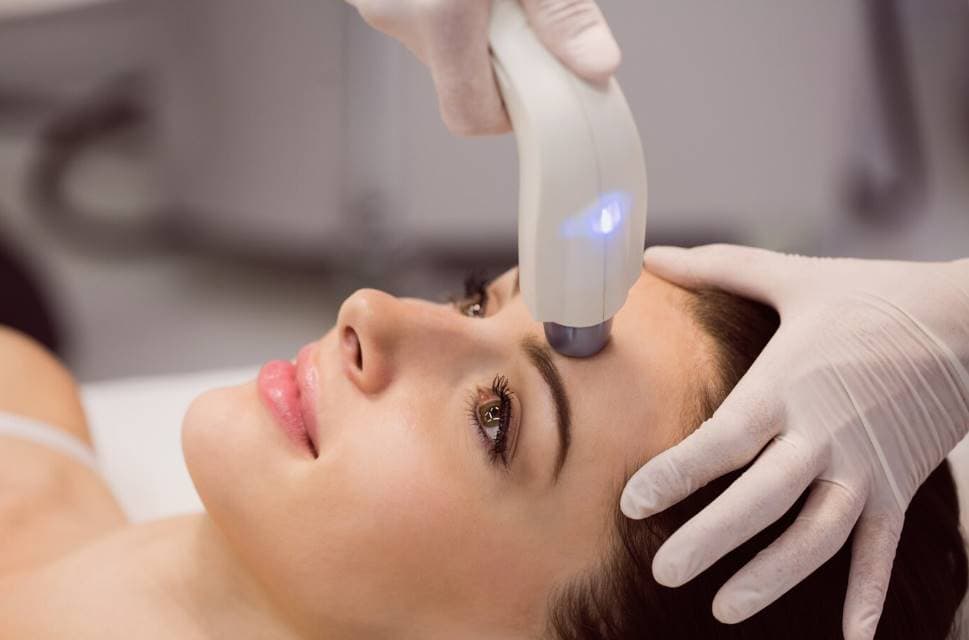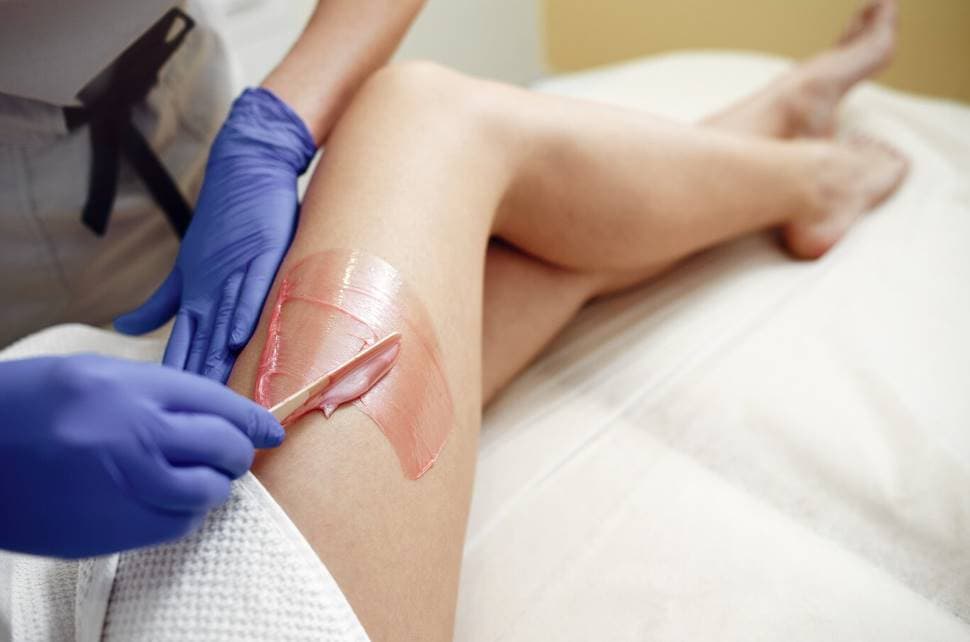The willow bark beta-hydroxy acid known as salicylic acid is a skincare powerhouse. Because of its wide-ranging benefits for the skin, it is commonly used in a wide range of skincare products. Exfoliation is one of its main uses.
Since salicylic acid is oil-soluble, it can reach the deepest parts of the pores and dissolve the excess sebum, dead skin cells, and other pore-clogging contaminants there. By keeping the pores clean and lowering the likelihood of outbreaks, this light yet effective exfoliation aids in acne prevention.
In addition, salicylic acid can reduce inflammation. It calms irritated skin, lowering acne-related redness and edoema. The skin is soothed, which helps with both the current issue of acne and the prevention of future breakouts.
Moreover, salicylic acid encourages skin rejuvenation. It aids in the diminishment of acne scars and blemishes by exfoliating away dead skin and stimulating the production of new, healthy skin cells.
In addition to being crucial for acne-prone skin, this regeneration process is important for skin health in general since it helps the skin look younger and healthier.
Psoriasis and seborrheic dermatitis are only two of the many skin disorders that salicylic acid is used to treat. Due to its keratolytic qualities, it aids in the shedding of the skin's outer layer, which in turn decreases scaling and makes the skin feel smoother. It also helps those who have enlarged pores or blackheads due to its ability to clear out the pores.
This method of thorough washing smoothes down the skin's surface for a more refined appearance. In general, salicylic acid has a revitalising and restorative effect on the skin, making it an essential weapon in the fight against acne, pimples, and other skin issues.
What Is Salicylic Acid?
Acetylsalicylic acid, commonly known as aspirin, and salicylic acid have similar chemical structures. Both compounds possess anti-inflammatory properties.
While salicylic acid is typically utilised topically, directly onto the skin, for skincare purposes, aspirin is usually ingested in tablet form. In the realm of skincare, salicylic acid stands out as a predominant ingredient, and this discussion will delve into its properties.
Naturally, salicylic acid can be found in the bark of the white willow tree and the leaves of the wintergreen shrub. However, in contemporary times, its production predominantly takes place in laboratories.
Related compounds, such as salicylate, sodium salicylate, and willow extract, often accompany salicylic acid in various formulations. To ensure one isn't overloading on a particular active ingredient, especially if it appears under a different nomenclature on skincare product labels, it's advised to thoroughly review these labels. Overindulgence in these compounds might exacerbate skin issues due to potential adverse effects.
Interestingly, within the skincare sector, salicylic acid is often termed a beta hydroxy acid, even though, chemically speaking, it doesn't fit this category. Rather, it falls under the classification of keratolytic agents, substances that break down or soften skin flakes. In essence, it operates as a chemical exfoliant, serving to slough off dead skin cells.
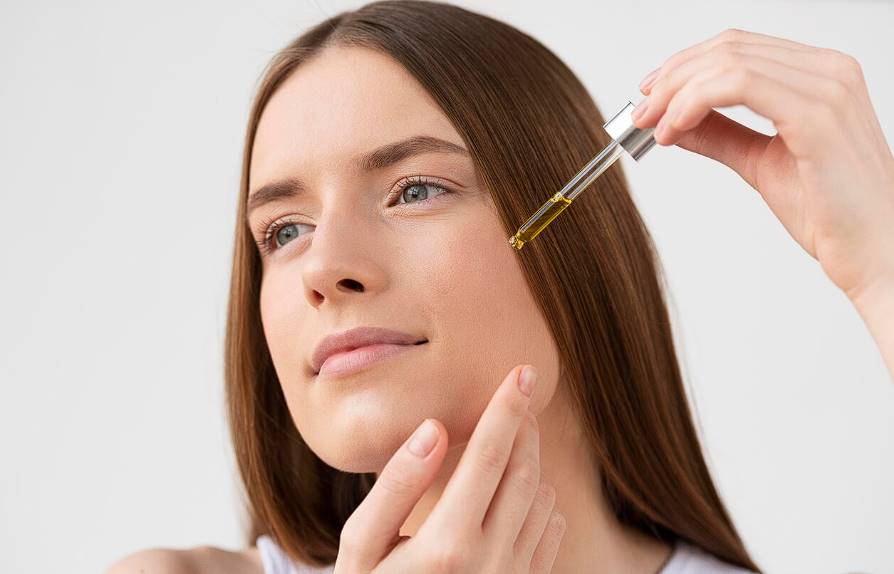
Key Benefits of Salicylic Acid
Salicylic acid, a key ingredient in many skincare products, offers a plethora of benefits for the skin.
- Exfoliation: Salicylic acid efficiently exfoliates by shedding dead skin cells and breaking down keratin, the protein binding these cells together.
- Combatting Blemishes: It plays a pivotal role in minimising and preventing blemishes.
- Addressing Scars: Salicylic acid aids in the fading of acne scars.
- Oil Control: For those with an oily complexion, it works wonders by controlling excess sebum.
- Smoother Skin Texture: Regular use can lead to a smoother skin surface.
- Treatment of Skin Growths: Apart from facial care, salicylic acid can be instrumental in removing calluses, corns, and warts.
How Salicylic Acid Works
Salicylic acid functions as a keratolytic agent, meaning it softens and dissolves keratin, enabling the shedding of dead and flaky skin. By doing so, it addresses one of the common culprits behind acne and blackheads: the build-up of dead skin cells and oil in hair follicles.
Furthermore, as a chemical exfoliant, salicylic acid penetrates deep, dissolving the build-up in hair follicles and oil glands. This not only addresses existing whiteheads and blackheads but also aids in preventing new ones from forming. Its oil-absorbing properties also mean it can thwart the onset of new blockages that could lead to breakouts.
One of the lesser-known yet invaluable properties of salicylic acid is its anti-inflammatory nature. It effectively reduces the associated pain, swelling, and redness of skin conditions. By curbing inflammation from acne and regulating the rate at which skin cells shed within the follicles, it ensures the pores remain clear.
Exploring the Various Formulations of Salicylic Acid
Salicylic acid, a renowned component in the skincare arena, is available in diverse formulations tailored for specific skin conditions and applications. Given its ubiquity in the cosmetic world, it's pivotal to understand the full spectrum of products it graces.
The concentration of salicylic acid in readily available skincare products typically hovers around 2%, though this can vary between 0.5% and 2%. For more robust applications, like wart treatments, this concentration can be higher. It's paramount to be judicious in its application and steer clear from facial contact in such cases.
Moreover, it's always advised to use salicylic acid products as prescribed, ensuring comprehensive coverage over acne-prone areas. Pairing these products with a sunscreen, unless already included, is essential.
Diverse Applications of Salicylic Acid
Facial Cleansers & Soaps: These deliver a regular infusion of the acne-fighting ingredient. Typically possessing a 2% concentration, they address conditions like psoriasis, acne, and oily skin.
Lotions, Creams & Ointments: Often used to address psoriasis and other skin conditions, these formulations can contain between 2% to 3% salicylic acid. Their goal? To exfoliate and simultaneously moisturise.
Liquids, Gels, Pads & Bandages: Tailored for treating warts and calluses, these often contain salicylic acid in a much stronger concentration, sometimes up to 40%. Care should be taken to avoid using such products on sensitive areas and consulting a doctor is crucial if warts appear on the face or other sensitive regions.
Shampoo & Scalp Treatments: With roughly a 2% salicylic acid concentration, these target conditions like dandruff or scalp psoriasis. They may be combined with other ingredients like coal tar or sulphur.
Peels: Salicylic acid peels pack a punch, with over-the-counter variants containing between 20% to 30% salicylic acid. While superficial peels can be done independently, deeper peels necessitate professional assistance.
Toner & Medicated Pads: Applied post-cleansing, these liquid treatments usually contain about 2% salicylic acid. They offer a dual-action of chemical and mechanical exfoliation, sometimes complemented by ingredients like glycolic acid or witch hazel.
Salicylic acid stands out as a versatile and effective solution. However, understanding its formulations and applications is key to harnessing its full potential.
How To Use Salicylic Acid Topical
Follow the guidance provided on the product's label. If in doubt, it's recommended to seek advice from a healthcare professional or pharmacist.
Before utilising this product for the first time, it's prudent to conduct an allergy patch test. Administer a minuscule quantity to a select problematic area and wait for three days to observe any results.
Should one exhibit any signs of an allergic reaction (detailed in the Side Effects section), the immediate cessation of this treatment is advised, and one should promptly seek medical advice. If no allergic manifestations arise, one may proceed to use the product.
This preparation is intended for topical application. Ensure the medication is kept clear of the eyes, nostrils, mouth, groin, and any compromised skin areas (like cuts or rashes) to prevent irritation. In the event of accidental contact, it's imperative to rinse the affected zone with cool water for about 15 minutes.
A slender layer of the cream, lotion, solution, or gel should be administered to the troubled skin areas once or twice a day, or as recommended by a medical professional. Prior to each application, cleanse the affected spot with a mild cleanser and pat dry. Deposit a small amount of the remedy on the affected area and gently rub it in. Before using medicated pads, clean the target area with a mild soap and pat dry.
The pad should then be employed to delicately dab the medication onto the skin, possibly up to three times daily or as directed by one's physician. It's advised to wash one's hands post-application.
For products containing salicylic acid, moisten the affected region before application. Work the cleanser into the skin for roughly 10-20 seconds, ensuring not to scrub the skin.
Formulate a substantial lather before rinsing thoroughly and patting dry. If the skin becomes overly dry due to the cleanser, consider using it less frequently or reducing the duration it remains on the skin. For comprehensive advice, liaise with your healthcare professional or pharmacist.
The exact dosage will be contingent upon the individual's condition and their response to the treatment. It's essential not to exceed the prescribed duration or dosage. Overuse will not hasten recovery and may lead to increased adverse reactions.
Should symptoms persist, intensify, or if one suspects an underlying serious health concern, it's imperative to seek immediate medical counsel.
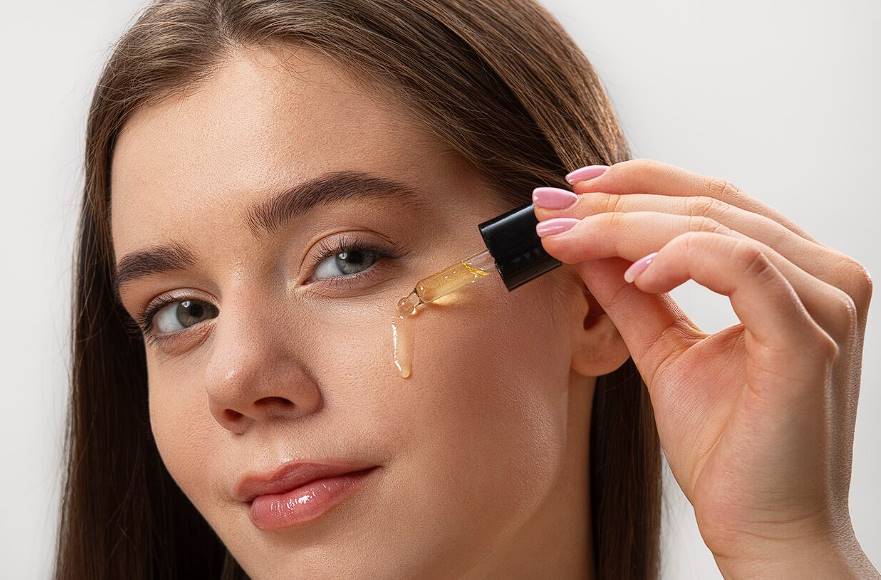
Benefits of Salicylic Acid
Salicylic acid, esteemed in the skincare industry, offers a plethora of benefits for various skin ailments ranging from warts to dandruff. Here's a closer look at the myriad ways this compound can benefit one's skin:
- Cellular Renewal and Exfoliation: Recognised as a keratolytic agent, salicylic acid promotes cellular turnover, aiding in the removal of dead skin cells. This rejuvenation process enhances both the texture and appearance of the skin.
- Tackling Superficial Acne: With its oil-soluble properties, salicylic acid delves deep into pores, breaking down the "adhesive" that binds skin cells. By doing so, it effectively clears the contents of clogged pores, addressing issues like blackheads, whiteheads, and small red blemishes.
- Oil Control: Being oil-soluble, salicylic acid has the capability to extract excess sebum, reducing oiliness below the skin's surface. Consequently, this aids in diminishing the appearance of enlarged pores.
- Preventing Future Breakouts: Salicylic acid proactively targets the root causes of whiteheads and blackheads, providing a shield against prospective skin flare-ups.
- Combatting Acne: The lipophilic nature of salicylic acid enables it to access and cleanse pores, ensuring their clarity and health.
- Minimising Pore Appearance: Salicylic acid, acting as an astringent, leads to skin contraction, making pores appear smaller and more refined.
- Accessibility: Unlike several potent skincare ingredients, products containing salicylic acid are easily accessible and can be found in numerous beauty and pharmaceutical outlets.
- Anti-inflammatory Properties: A derivative of the salicylate drug family, salicylic acid shares aspirin's anti-inflammatory characteristics. As a result, it's highly effective in alleviating the inflammation and redness often seen with acne breakouts.
Salicylic acid stands out as a multifunctional asset in skincare, addressing a wide range of concerns and offering notable improvements in skin health and appearance.
Conclusion
Salicylic acid is a beta-hydroxy acid that can be found in the bark of the white willow tree and the wintergreen plant. It is a powerful ingredient for skin care with many benefits. It is used in many skin care items to remove dead skin, reduce inflammation, and help the skin renew itself.
It is used to treat psoriasis and seborrheic dermatitis by getting rid of the top layer of skin, reducing scaling, and making the skin smoother. Salicylic acid is also used to treat pimples and pores that are too big, which makes the skin look better.
Salicylic acid is a chemical cleanser that breaks down dead skin cells. This stops dead skin cells and oil from building up in hair follicles. It gets deep into the skin and dissolves the buildup in the hair shafts and oil glands, which stops new buildup from happening. Its ability to soak up oil also stops new blocks that could cause acne from forming.
One of the less well-known but very useful things about salicylic acid is that it can reduce pain, swelling, and redness caused by skin diseases. It keeps pores clear by reducing inflammation and controlling the rate at which skin cells fall off in follicles.
Salicylic acid is a common ingredient in skincare products, and it can be made in different ways to suit different skin types and uses. Its level in goods is usually around 2%, but it can be anywhere from 0.5% to 2%.
This percentage can be higher for more powerful uses, such as treating warts. It's important to be careful about how you use it and not touch your face. Products with salicylic acid are often recommended to cover acne-prone areas completely.
Salicylic acid is used in many different ways, such as in facial soaps and cleansers, lotions, creams, ointments, liquids, gels, pads, bandages, shampoos and treatments for the hair, peels, toners and medicated pads. To use salicylic acid topically, follow the directions on the product's package and talk to a doctor or pharmacist if you have any questions.
Before you use salicylic acid, you should do a patch test for allergies and wait three days to see what happens. If there are no allergic responses, stop the treatment and talk to a doctor.
Apply a thin layer of the cream, lotion, solution, or gel to the areas of skin that are bothering you once or twice a day or as directed by a doctor. Before applying the wash, put lotion on the area that needs it and work it into the skin for 10 to 20 seconds.
Salicylic acid can help with many skin problems, like regenerating skin cells and removing dead skin, getting rid of oil, avoiding future breakouts, treating acne, and making pores look smaller.
It is easy to get and can be found in many makeup and drug stores. Also, salicylic acid has the same anti-inflammatory qualities as aspirin, which makes it very good at reducing the swelling and redness that often come with acne.
Content Summary
- Salicylic acid is renowned as a skincare stalwart.
- Derived from willow bark, it's termed a beta-hydroxy acid.
- A prevalent ingredient in many skincare formulations.
- It excels in exfoliation, reaching the deepest skin layers.
- Its oil-solubility lets it dissolve excess sebum and dead skin.
- Regular use ensures cleaner pores and fewer outbreaks.
- It boasts anti-inflammatory properties to combat skin irritation.
- Redness and swelling from acne are notably reduced with its application.
- Salicylic acid champions skin rejuvenation.
- By promoting new skin cell growth, it diminishes acne scars.
- It contributes to a younger and healthier-looking skin.
- Its effectiveness extends to treating psoriasis and seborrheic dermatitis.
- Owing to its keratolytic nature, it aids in skin flake shedding.
- Those troubled with enlarged pores can benefit from its pore-clearing capability.
- The overall effect? Revitalised, restored skin health.
- Interestingly, its chemical structure shares similarities with aspirin.
- Both compounds tackle inflammation effectively.
- Salicylic acid's roots trace back to the white willow tree bark and wintergreen shrub leaves.
- Its modern production predominantly occurs in labs.
- Variants like salicylate and sodium salicylate often complement it in skincare products.
- In skincare, its classification often blurs between beta hydroxy acid and keratolytic agents.
- Its core function remains to exfoliate and remove dead skin cells.
- Exfoliation with salicylic acid entails shedding dead skin and breaking down keratin.
- It plays a pivotal role in blemish control.
- Acne scars fade more effectively with its application.
- Oily skin types benefit from its sebum control properties.
- Expect smoother skin texture with regular use.
- Beyond facial care, it's instrumental for calluses, corns, and warts.
- As a keratolytic agent, it softens keratin, promoting skin shedding.
- It's especially effective against acne and blackhead culprits.
- Its deep penetration unclogs hair follicles and oil glands.
- It's a frontline defence against whiteheads and blackheads.
- By absorbing excess oil, it prevents new blockages leading to breakouts.
- Its lesser-known anti-inflammatory property significantly reduces skin condition symptoms.
- Salicylic acid maintains pore clarity by regulating skin cell shedding.
- Its versatility spans across diverse formulations for specific skin concerns.
- Typical skincare concentrations vary between 0.5% and 2%.
- High concentrations, such as in wart treatments, require careful application.
- Facial cleansers infused with salicylic acid offer consistent acne-fighting effects.
- Lotions and creams with salicylic acid exfoliate and moisturise simultaneously.
- High concentration salicylic acid is found in treatments for warts and calluses.
- Dandruff and scalp psoriasis benefit from salicylic acid shampoos.
- Salicylic acid peels rejuvenate the skin, with deeper peels needing professional guidance.
- Toners and medicated pads infused with it offer dual-action exfoliation.
- Always consult the product label or a professional before its application.
- First-time users should conduct an allergy patch test.
- The right dosage is essential for optimal benefits and minimal side effects.
- Cellular renewal is enhanced with salicylic acid, promoting healthy skin appearance.
- As an astringent, it refines and minimises pore appearance.
- Accessible and effective, salicylic acid remains a cornerstone in skincare solutions.
Frequently Asked Questions
Salicylic acid is a beta hydroxy acid (BHA) known for its exfoliating properties. It penetrates into the pores, dissolving excess oils and dead skin cells. This helps to unclog pores, prevent acne, and improve overall skin texture. It is particularly effective for people with oily or acne-prone skin.
Salicylic acid is oil-soluble, which means it can penetrate the sebum in the skin and reach deep into the pores. By exfoliating the inside of the follicles, it prevents the pores from becoming clogged, reducing blackheads, whiteheads, and acne lesions. It also has anti-inflammatory properties, which can help reduce redness and swelling associated with acne breakouts.
Salicylic acid can be harsh for individuals with sensitive skin, causing irritation and dryness. However, many products containing salicylic acid are formulated with lower concentrations, making them gentler for sensitive skin. It's important to patch-test any new product and introduce it gradually into your skincare routine to monitor your skin's response.
Yes, salicylic acid is not only beneficial for acne-prone skin but also for various other skin concerns. It can help treat certain types of warts, psoriasis, seborrheic dermatitis, and calluses. Its exfoliating properties promote skin renewal, making it useful for addressing these conditions.
Salicylic acid products, such as cleansers, toners, spot treatments, and moisturizers, should be used as directed by a dermatologist or according to the product label. Typically, they are used once or twice daily. It's important to start with a lower concentration and gradually increase it if your skin tolerates the product well. Additionally, wearing sunscreen during the day is essential as salicylic acid can increase skin sensitivity to the sun.
